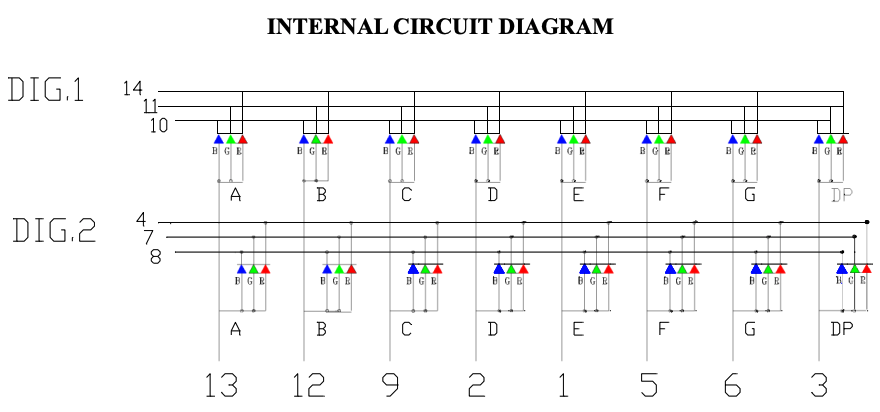I want to use an AVR microcontroller to ultimately control an array of RGB 8-segment displays. The only relatively cost effective RGB 8-segment I could find was here,
but it isn't common anode/cathode; instead, it's slightly more involved in order to reduce pin count from 25 to 14:
There's no reference to an associated driver, so:
- Is this a standard topology, which would have associated driver ICs?
It appears that a PWM must be used to split the cycle in two (a half cycle for each of the two digits on the dual 8-segment display), in which the cycle may be depleted further to dim the associated color (RGB), so:
- If not, is there a means to array a datastream (serial or other) to PWM signal?


